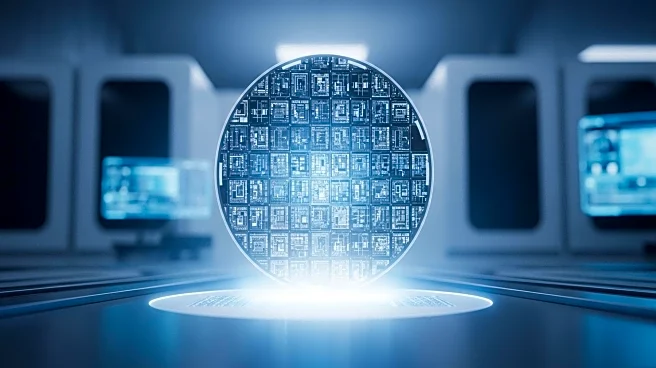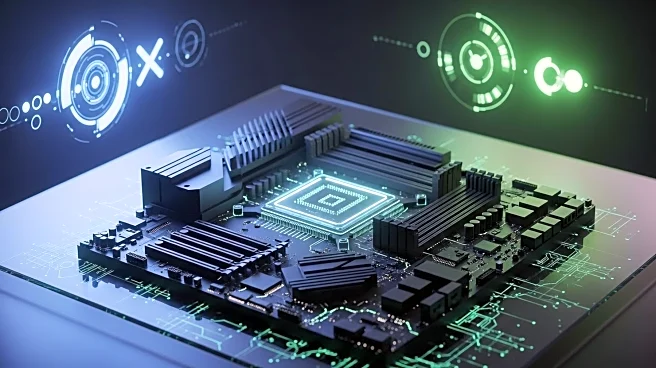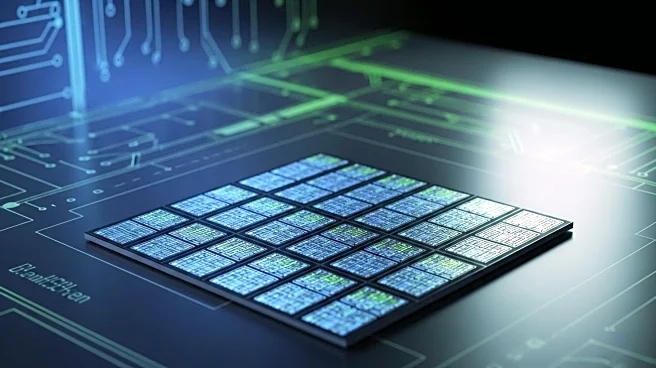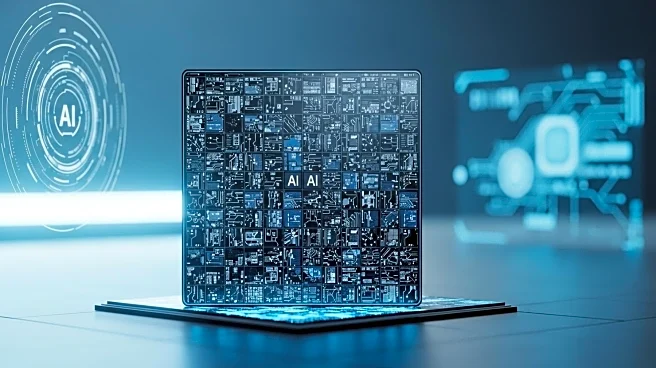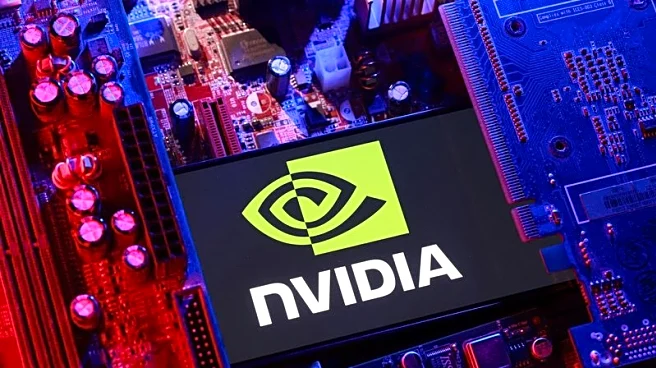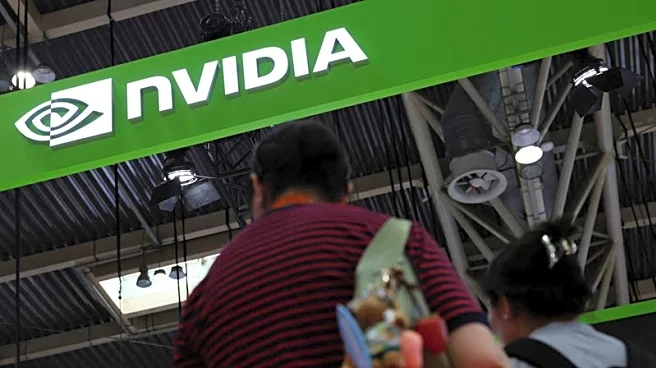What's Happening?
Nvidia has announced a strategic investment in Intel, acquiring a $5 billion stake to collaborate on developing multiple generations of data center and PC products. This acquisition positions Nvidia as one of Intel's largest shareholders, owning approximately 4% of the company. The collaboration will focus on integrating Nvidia's NVLink interface with Intel's x86 CPUs, enhancing data transfer speeds crucial for AI applications. Intel will manufacture customized CPUs for Nvidia's AI infrastructure platforms, targeting enterprise and hyperscale customers. Additionally, Intel will produce x86 system-on-chips incorporating Nvidia's RTX GPUs for consumer PCs, aiming to compete with AMD's offerings. This partnership comes as Intel seeks to regain market share in the AI chip sector after facing challenges in recent years.
Why It's Important?
The collaboration between Nvidia and Intel is significant for the semiconductor industry, particularly in the AI sector. Nvidia's investment and partnership with Intel could bolster Intel's position in the competitive AI chip market, where it has struggled against rivals like AMD. The integration of Nvidia's NVLink with Intel's CPUs promises faster data processing capabilities, essential for AI workloads. This move could lead to advancements in AI technology and potentially shift market dynamics, benefiting both companies. For Nvidia, the partnership enhances its influence in the semiconductor industry, while Intel gains a strategic ally to address its recent challenges and capitalize on the growing demand for AI solutions.
What's Next?
The partnership is expected to lead to the development of new AI-focused products, with Intel manufacturing CPUs tailored for Nvidia's platforms. The companies will likely focus on optimizing their architectures for AI applications, potentially influencing future product offerings in the data center and consumer PC markets. Stakeholders, including enterprise customers and tech enthusiasts, will be watching for the impact of this collaboration on product performance and market competition. The success of this partnership could prompt further collaborations in the semiconductor industry, as companies seek to leverage synergies to address evolving technological demands.


